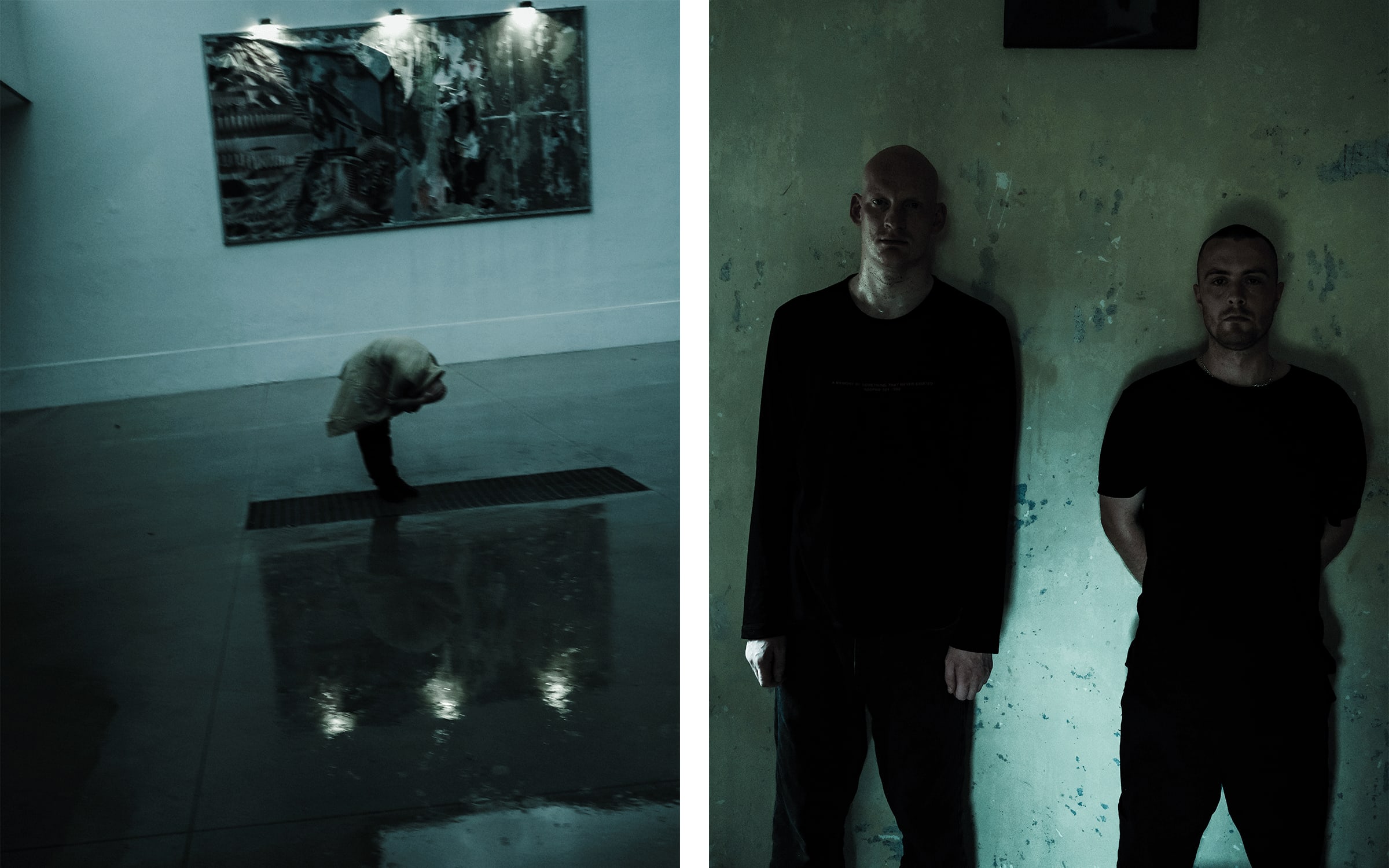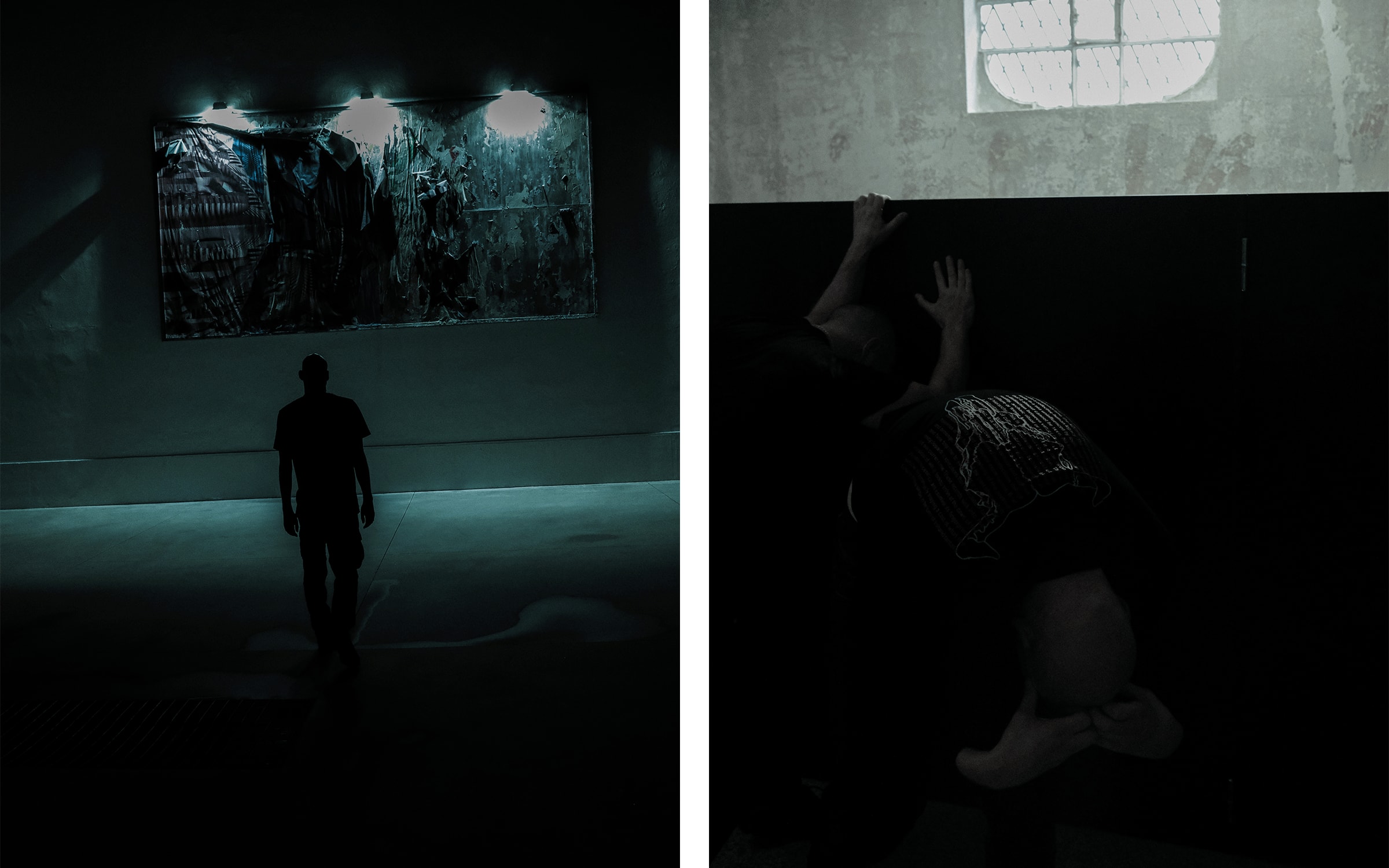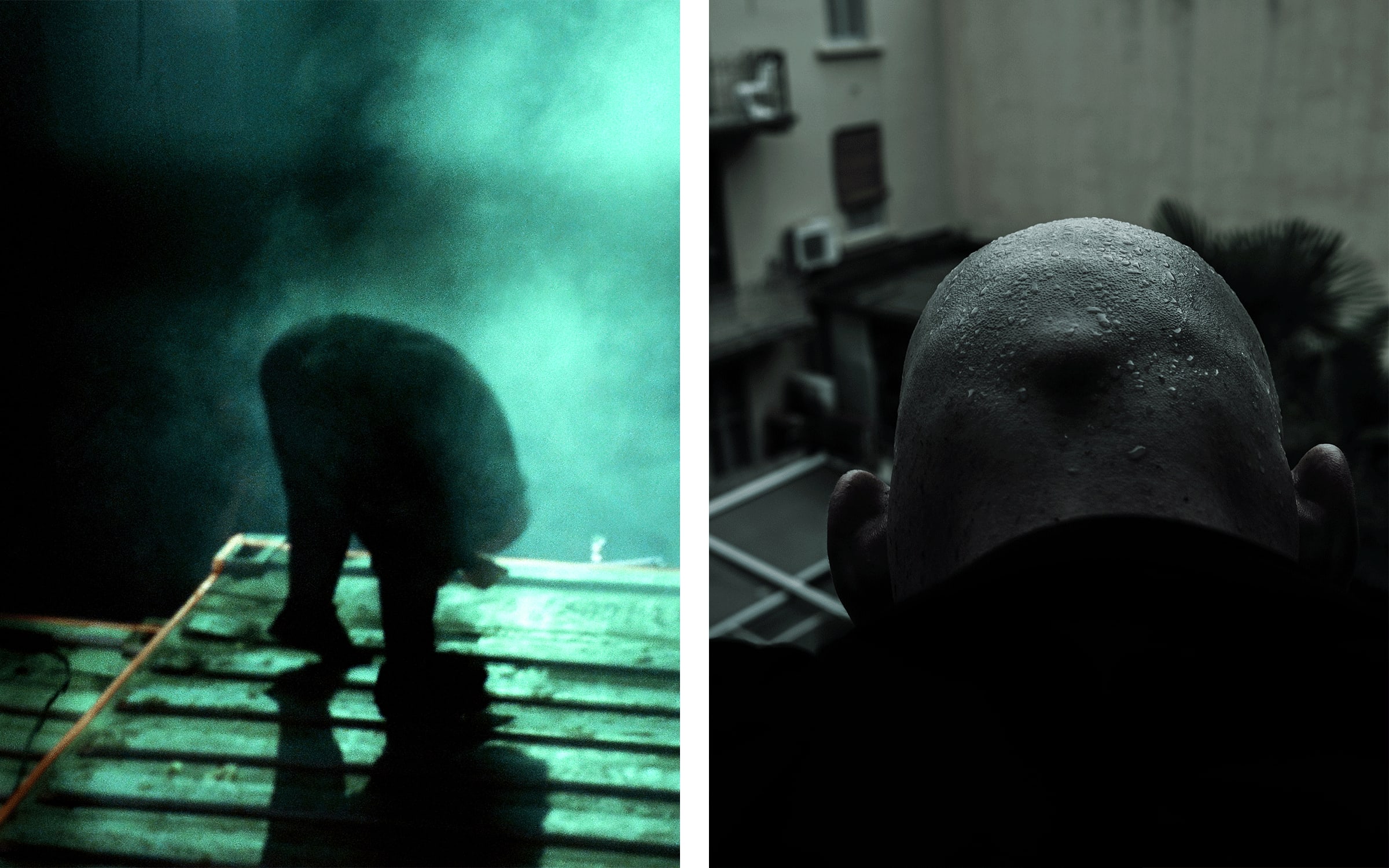The work of Blackhaine – a fictional character created by Manchester-based artist Tom Heyes – combines body art, hip hop, industrial music, and urban dance. He collaborates with international contemporary superstars, like Playboi Carti and Kanye West, and his eclectic presence on stage evokes the ghosts of Jean Genet and Sarah Kane. Through his cathartic performances, Blackhaine deploys a physical and sonic energy recalling Artaud’s Theater of Cruelty.
In the runup to his performance in Paris, the choreographer and rapper sat down with Charles Teyssou and Pierre-Alexandre Mateos, the curators of Paris+ par Art Basel’s 2023 Conversations program.

Pierre-Alexandre Mateos and Charles Teyssou: Your sound is a hybrid of different styles – rap, drill, spoken word, industrial, ambient, and gothic – unified by a sort of ‘Dark England’ aesthetic. How does it relate to Manchester’s music scene and fantasy subcultures?
Blackhaine: As a kid, I listened to a lot of Joy Division and Section 25. These bands pushed me into expressing more extreme and repressed feelings. What is maybe specific about Manchester is the radicality of its propositions because there are fewer opportunities and less money. I see myself as an artist and I don’t trust the subculture grid anymore. My generation came after the Troubles in Northern Ireland [1960s-1998] and after Margaret Thatcher’s premiership [1979-1990]. Immigration has also had durable effects on music and so-called subcultures. People now might be more interested in the idea of sound, installation, and dance than in pure music classification. Trap music is dead; Drill music is dead; club culture has been dead since Covid. There are no more mythical clubs like there were in the 1980s, such as the Haçienda in Manchester, or Northern Soul venues like Wigan Casino. The most recent subculture events around Manchester were The White Hotel, which opened in Salford in 2015, and Wigan Pier in the 2010s.
As a dancer and choreographer, you borrow elements ranging from the UK rave scene to Butoh, which evolved in Japan during the late 1950s.
My interest in dance started when I was working at a train station, just waiting for the weekends to come so I could get drunk and high in my bedroom. I was constantly looking for more hardcore music and harsh noise. It was also the moment when I started dancing and posting on Instagram, although I didn’t really have a name for it at that point. My next task was to put that kind of idea onto other people’s bodies – which I’m still working out, to be honest. One of the first popular dances around me was Donk, a rave scene that was active at Wigan Pier. It was one of the cheapest music styles you can imagine, often associated with drugs and alcohol. Even if Donk was tacky, it was the only sound that people could enjoy. It is often a one-stock sound, but if you play it at 150 bpm with all these strings arrangements, then the wack beat starts coming in. In a way, this movement was the hangover from the soulful house music of the 1990s.

The idea of pushing the boundaries of the body to access a superior and absolute emotion is something you share with Antonin Artaud. At the core of Artaud’s First Manifesto for a Theatre of Cruelty [1932] is the notion of exhaustion. Your own practice is not only characterized by this intense physicality but also by another idea dear to Artaud: the body as a site of mutilation or sacrifice.
Mutilation, sacrifice, even bodily horror: I suppose we both consent to a form of gentle torture. As a choreographer and dancer, but also as a spectator, I like to play with the notion of cruelty. You can angle certain actions to generate something brutal or banal, as a climax or just a refrain. It questions how we view pain as an audience. In the case of my performance for Paris+ par Art Basel, I will explore this notion of vulnerability by putting weighted plates on my body. It will be harder to move and will affect me. It’s maybe here that I can relate to Artaud’s Theatre of Cruelty. My main access point to the body is this suffocating instant. When you’re bored, exhausted, sweating, and then you dance, something blurry, undefined appears. It is this abstract and cathartic moment that I am looking for.
Another common denominator between your work and Artaud’s is textual and oral experimentation. Stream of consciousness, dissociative voice, invented language, primal screams, spontaneous confession, or incantation are poetic methods that you often use in your practice.
I like to experiment with text and orality. I often improvise. A lot of my best songs are just recorded in the pure present moment. Sometimes, during a performance, I have one or two flashbacks from my teenage years, and I don’t know if it is something I’m subconsciously conjuring to inspire the next part of the performance. Improvisation and letting archaic emotion surface are part of my process. I am trying to redirect this primal energy into something more ritualized. I consider my work as poetry, in a lyrical sense. My projects could be read as lyrical and mental image or states of mind. I am trying to transmit a feeling, a sensation, a forgotten image of an abandoned car, a fire escape, a place between life and death, a purgatory.

Your work is also influenced by the French poet Jean Genet, who was fascinated by the underworld, its reversed rules and erotic dimension. How did you intersect with this subversive figure?
When I was a teenager, I would listen to Rick Ross and Pusha T, these kinds of big, bombastic American rappers. What I found fascinating in Genet was a more static attraction to insignificant characters. He writes with such longing, whilst still being fully aware of the fakeness of the situation. It is this tension between fakeness and pretension that interests me. Genet was a true lyrical poet. He said something about children being born, like bombs falling from the sky, and that absolutely blew my mind. He makes me think of the period when I was creating my own character, Blackhaine, who started out as the most hateful kind of individual. But, when I took a step back, I could see that it was just a pathetic boy, a wannabe gangster. In the end, I realized with Genet and rap culture that I was more attracted to people who wanted to be gangsters than people who were actually gangsters.
Blackhaine will perform at Palais de Tokyo on Friday, October 20, as part of the Conversations program of Paris+ par Art Basel 2023. Find more information here.
Pierre-Alexandre Mateos and Charles Teyssou are the curators of the Conversations program of Paris+ par Art Basel.
Running October 19 to 21, 2023 at the Musée national Picasso-Paris, Conversations is free to the public. The program will be held in English and French with simultaneous translation. Learn more here, and discover the full program below.
Caption for full-bleed images, from top to bottom: 1. Blackhaine by Rawtape. Courtesy of the artist. 2, 3. Blackhaine by Frankie Casillo. Courtesy of the artist.
Published on October 12, 2023.